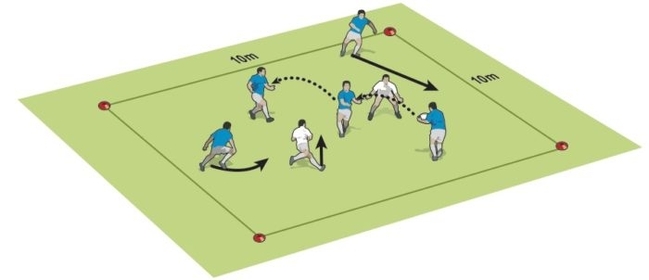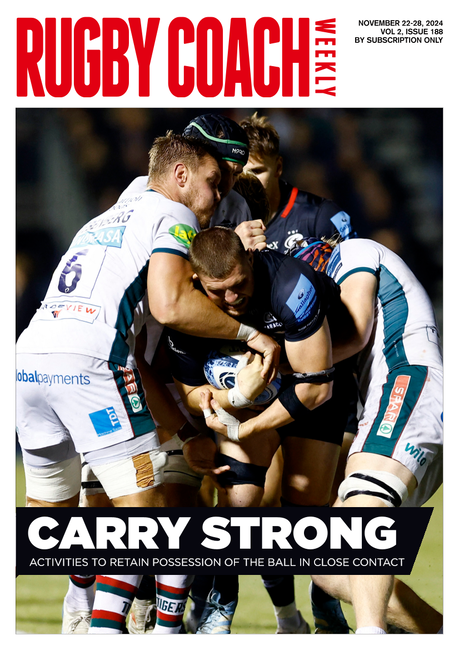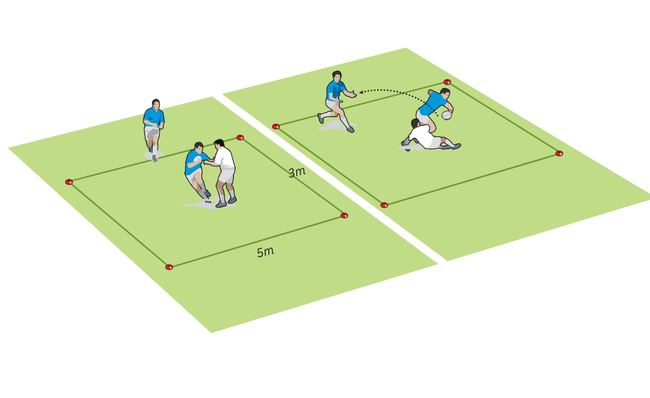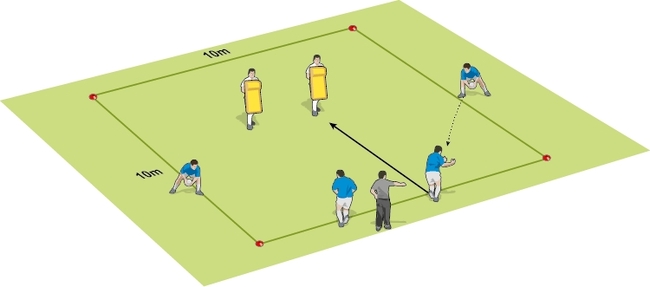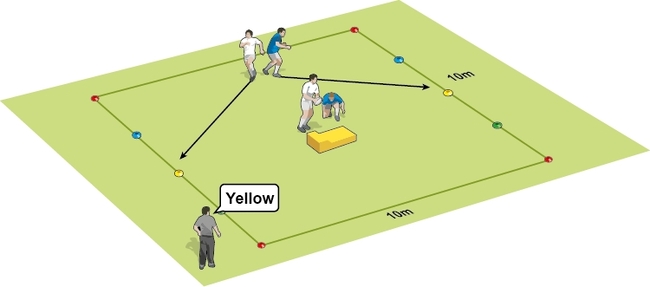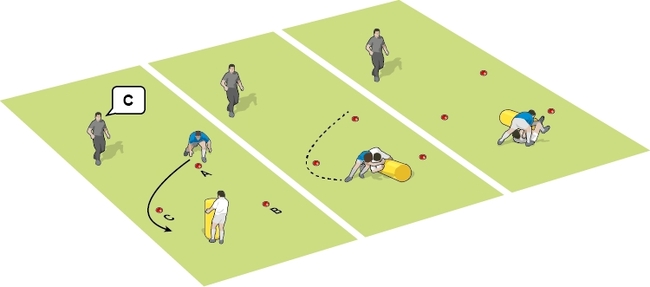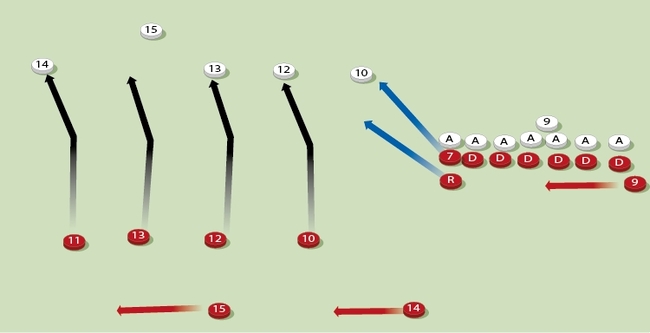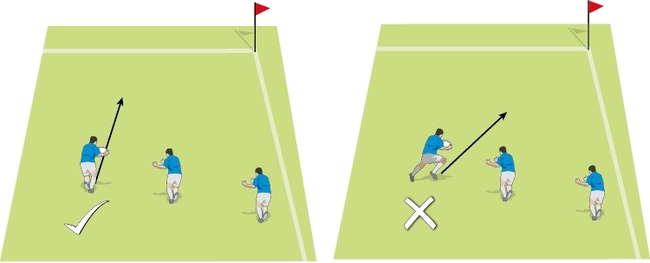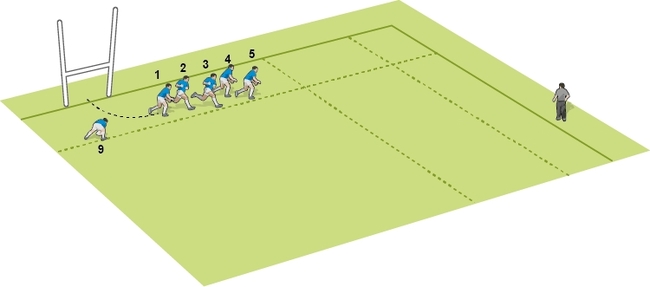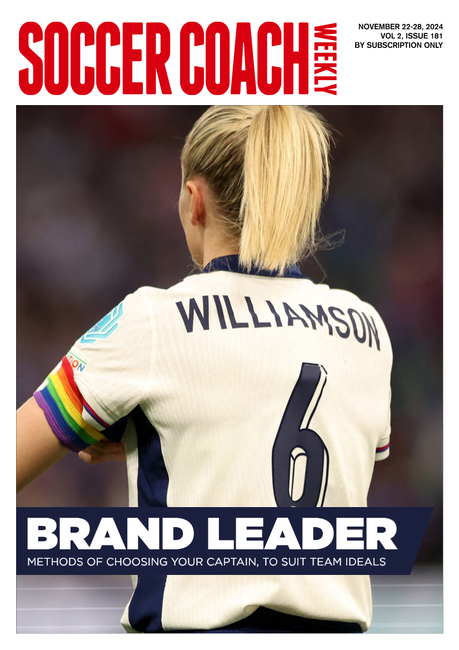CORE SKILLS: Keep the ball after contact
Contactby Rob Appleyard
Let's concentrate on retaining the ball after the tackle. The player has to be “busy, busy, busy” deciding which contact skill on the ground to use to protect the ball.

Previously, you should have worked on keeping the ball secure before contact, working to the edges of the defender and offloading the ball going through contact.
The final element is post contact, when the ball carrier is brought to ground.
So much of what happens next depends on how the ball carrier has been tackled and whether he has won the collision or not. Let’s start with the key elements of winning the collision.
A power step takes the player to the edge of the defender, the leg drive keeps him working through the contact and the body height helps retain his momentum.
If he is brought to ground from here, the ball carrier must concentrate on being busy. Turnovers can often occur because the ball carrier has not been active enough in the last few moments before he has to place the ball.
You need to create repeatable good habits with lots of goes for each player on all the possible outcomes when they go to ground. Use my coach-led ball placement exercise to work on this.
Ideally, the ball carrier can “power roll”, continuing his forward momentum by rolling over a few times before placing the ball. The tackling team will have a moving target that keeps hiding the ball in this case.
Or he steals a metre before he “jack knifes” the ball back or pencil (long) places the ball back.
One skill that players seem to have forgotten is passing off the ground. This is still a valid method of continuity, especially if the tackled player can get onto his back before passing the ball up.
Draw all the elements of contact together with a simple “piggy in the middle” game, like the one I have used many times with my senior players.
Finally, play a 4v4 full tackling game in a small area.

Previously, you should have worked on keeping the ball secure before contact, working to the edges of the defender and offloading the ball going through contact.
The final element is post contact, when the ball carrier is brought to ground.
So much of what happens next depends on how the ball carrier has been tackled and whether he has won the collision or not. Let’s start with the key elements of winning the collision.
A power step takes the player to the edge of the defender, the leg drive keeps him working through the contact and the body height helps retain his momentum.
If he is brought to ground from here, the ball carrier must concentrate on being busy. Turnovers can often occur because the ball carrier has not been active enough in the last few moments before he has to place the ball.
You need to create repeatable good habits with lots of goes for each player on all the possible outcomes when they go to ground. Use my coach-led ball placement exercise to work on this.
Ideally, the ball carrier can “power roll”, continuing his forward momentum by rolling over a few times before placing the ball. The tackling team will have a moving target that keeps hiding the ball in this case.
Or he steals a metre before he “jack knifes” the ball back or pencil (long) places the ball back.
One skill that players seem to have forgotten is passing off the ground. This is still a valid method of continuity, especially if the tackled player can get onto his back before passing the ball up.
Draw all the elements of contact together with a simple “piggy in the middle” game, like the one I have used many times with my senior players.
Finally, play a 4v4 full tackling game in a small area.
Newsletter Sign Up
Coaches Testimonials

Gerald Kearney, Downtown Las Vegas Soccer Club

Paul Butler, Florida, USA

Rick Shields, Springboro, USA

Tony Green, Pierrefonds Titans, Quebec, Canada
Subscribe Today
Be a more effective, more successful rugby coach
In a recent survey 89% of subscribers said Rugby Coach Weekly makes them more confident, 91% said Rugby Coach Weekly makes them a more effective coach and 93% said Rugby Coach Weekly makes them more inspired.
Get Weekly Inspiration
All the latest techniques and approaches
Rugby Coach Weekly offers proven and easy to use rugby drills, coaching sessions, practice plans, small-sided games, warm-ups, training tips and advice.
We've been at the cutting edge of rugby coaching since we launched in 2005, creating resources for the grassroots youth coach, following best practice from around the world and insights from the professional game.
